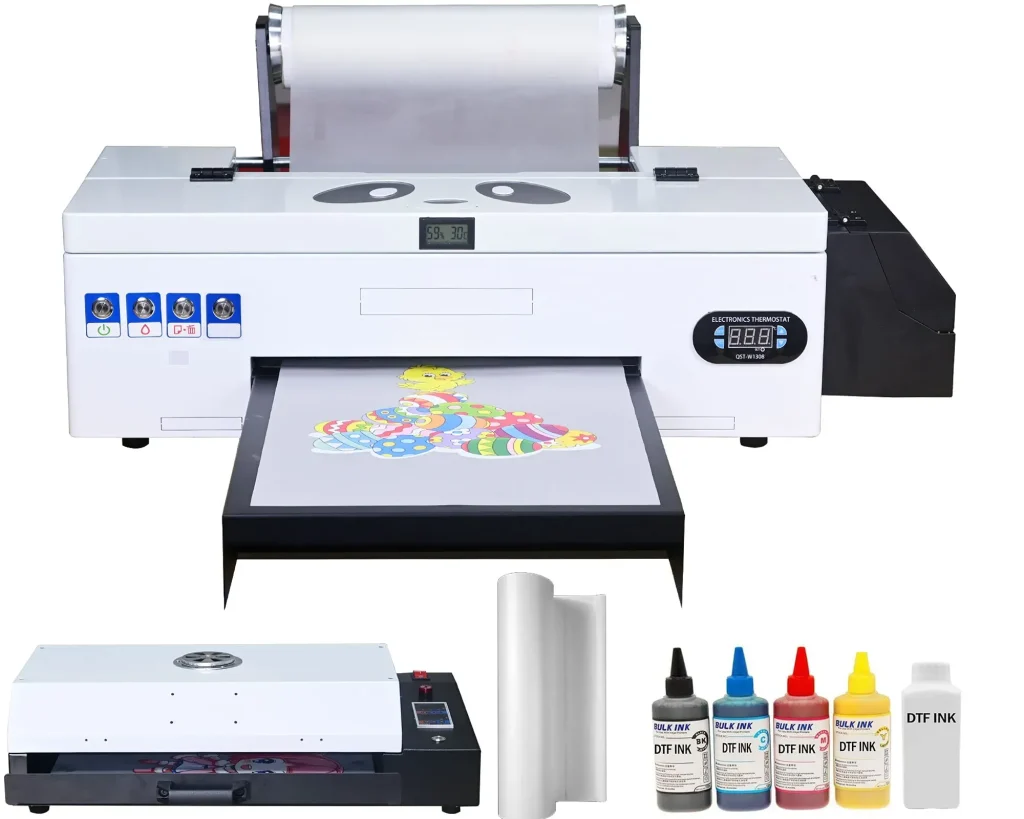The DTF printer has rapidly gained popularity in the textile industry, revolutionizing how designs are applied to fabric. With its Direct to Film printing technology, this innovative machine can produce vibrant, high-quality prints that meet the demands of modern apparel markets. For entrepreneurs contemplating the best DTF printers available, understanding key features and performance metrics is paramount. In this guide, we’ll offer practical tips on how to choose a DTF printer that aligns with your business needs, alongside comprehensive DTF printer reviews. Whether you’re looking to buy a DTF printer for a startup clothing line or wanting to upgrade your existing equipment, this introduction will set the stage for your informed decision-making.
When exploring options in the printing realm, selecting the right Direct to Film printer can be a pivotal choice for your business. This advanced printing solution enhances the efficiency and quality of designs transferred directly onto fabrics, catering to both small and larger scale operations. As you navigate the landscape of fabric printing, various alternatives to conventional methods might enter your radar, leading you to consider factors such as print clarity, operation speed, and overall capabilities. This overview will guide you to understand the nuances of DTF printing technology, ensuring you make the best-informed decision. By evaluating user feedback and industry trends, you can find a reliable and efficient printing solution that supports your artistic endeavors.
Understanding DTF Printing Technology
DTF printing technology, or Direct to Film printing, is poised as a game changer in the textile and apparel sector. Unlike traditional printing methods, DTF employs a unique process that allows for vibrant and durable prints directly onto transfer films, which can then be heat applied to various fabrics. This method stands out due to its ability to produce high-quality images with intricate designs, making it ideal for small businesses and independent apparel creators looking to make a statement. Moreover, the technology’s capability to print on a variety of surfaces broadens its appeal in the diverse market of fabric applications.
The rise of DTF technology has also sparked innovation in ink formulations and printing equipment, resulting in improved durability and washability of the prints. Businesses can now offer products that withstand the rigors of everyday use while maintaining their aesthetic appeal. Understanding the fundamentals of DTF printing technology is critical for entrepreneurs aiming to leverage it for their business needs, ensuring they make informed choices when investing in the right equipment.
Frequently Asked Questions
How do I choose the right DTF printer for my business?
Choosing the right DTF printer involves evaluating print quality, speed, ink type, cost of operation, ease of use, and user reviews. Look for printers that offer high-resolution outputs (at least 1440 DPI) and fast print speeds to meet your production needs while staying within your budget. Additionally, consider the types of inks used and their environmental impact.
What are the best DTF printers available in the market?
Some of the best DTF printers include models from popular brands like Epson, Mimaki, and Roland. These printers are known for their high print quality, speed, and durability. Always refer to recent DTF printer reviews to find the most recommended models suited to your business needs.
What advantages does DTF printing technology offer over other printing methods?
DTF printing technology offers several advantages, including vibrant colors, excellent durability, and the ability to print on various fabrics. Unlike traditional methods, DTF printing allows for faster production times and lower setup costs, making it an ideal choice for both small and large businesses in the textile industry.
What should I consider regarding the cost when buying a DTF printer?
When buying a DTF printer, consider not just the initial purchase price but also the cost of inks, maintenance, and supplies. Calculate the total cost of operation to determine long-term affordability. A printer with a low upfront cost may have high consumable expenses that can affect profitability.
Are DTF printers easy to use for beginners?
Many modern DTF printers are designed with user-friendliness in mind, featuring intuitive controls and comprehensive support. Ensure that the printer you choose is compatible with your design software and offers customer service assistance to help troubleshoot any issues that may arise.
How important are user reviews when selecting a DTF printer?
User reviews are crucial when selecting a DTF printer. They provide insights into the printer’s performance, reliability, and customer satisfaction. Look for brands with positive feedback in the DTF printing community to ensure you make an informed and confident purchase.
| Key Considerations | Description |
|---|---|
| Print Quality | Look for printers that guarantee high-resolution outputs of at least 1440 DPI for vibrant details. |
| Print Speed | Consider the required print speeds for your production volumes to enhance productivity. |
| Ink Type | Choose printers with eco-friendly inks that ensure color accuracy and durability. |
| Cost of Operation | Analyze ongoing expenses including ink, supplies, and maintenance to evaluate total costs. |
| Ease of Use | Ensure compatibility with design software and find intuitive interfaces for user-friendliness. |
| Machine Quality | Opt for well-constructed printers to minimize maintenance costs and improve durability. |
| Warranty and Support | Prioritize models with solid warranties and good customer support to handle issues promptly. |
| User Reviews | Research feedback from existing users to gauge reliability and performance of the printer. |
Summary
Choosing the right DTF printer for your business is a crucial step towards achieving success in the textile and apparel industry. With the DTF printer technology evolving rapidly, it is essential to consider factors such as print quality, speed, and the total cost of operation when making your decision. By focusing on these aspects, you can invest in a printer that not only meets your current needs but also positions you for future growth and competitiveness. As this innovative technology continues to change, staying informed will help you take advantage of the latest advancements, ensuring lasting satisfaction and quality in your printed products.


